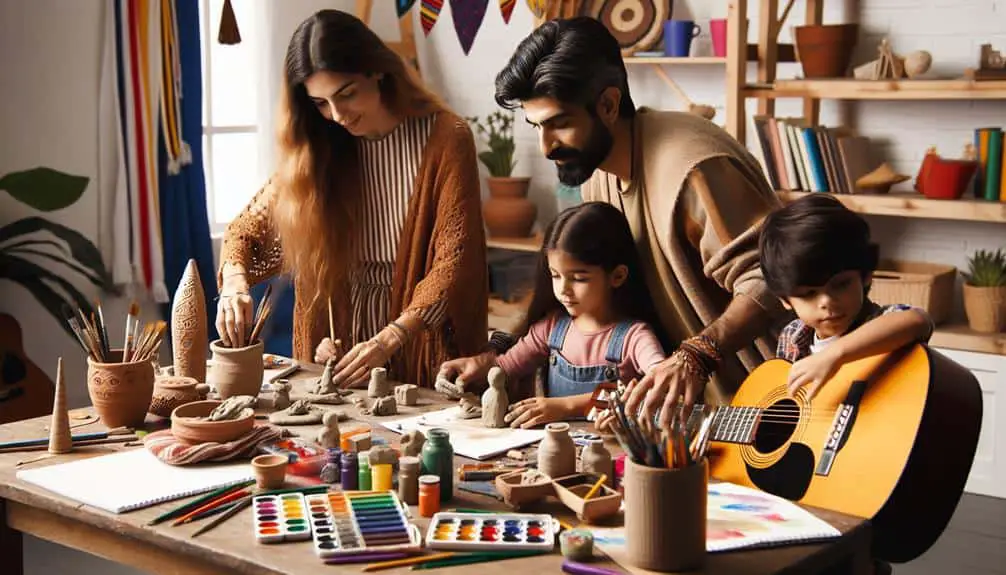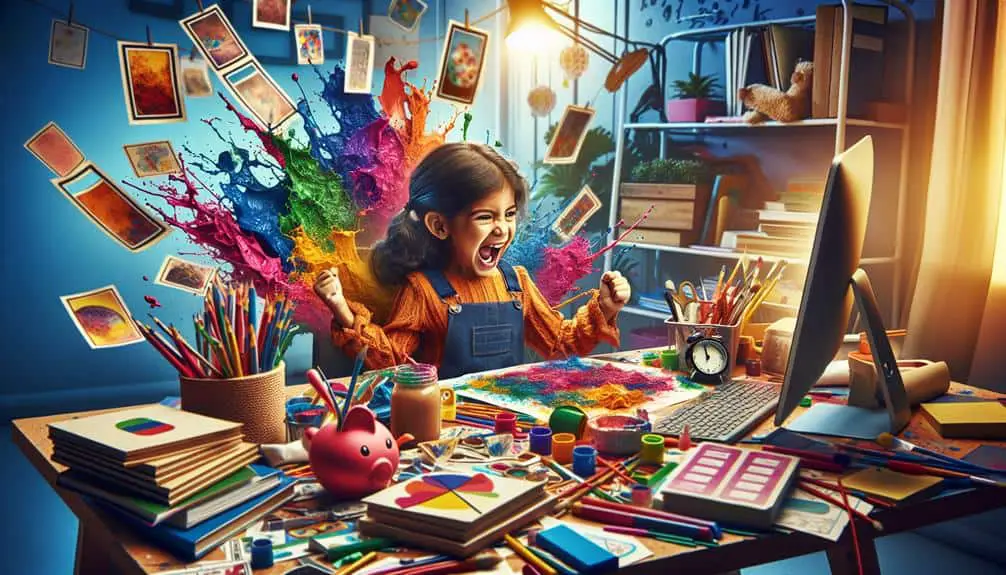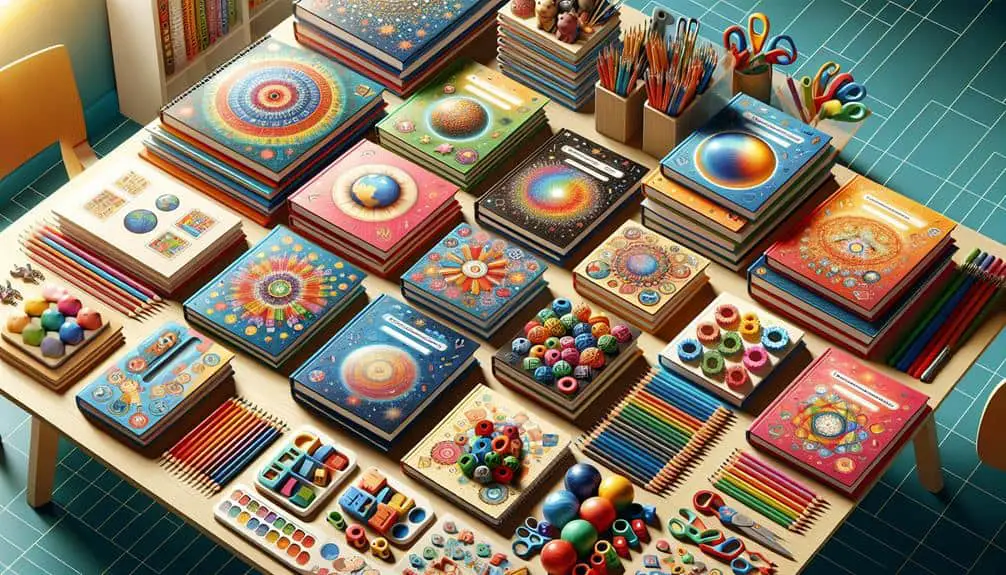Enhancing your homeschooling curriculum with music and arts can boost creativity, critical thinking, and academic performance. It provides a platform for emotional expression and fosters cognitive development. Infusing lessons with creativity sparks imagination and critical thinking, making learning engaging. Online platforms like Khan Academy offer interactive activities, while hands-on projects like painting provide self-expression opportunities. Assess progress regularly to tailor the curriculum. Flexibility allows customization to unique learning styles, interests, strengths, and areas for growth. Implementing music and arts in homeschooling can enrich your child's education in multiple ways.
Key Points
- Infuse lessons with creativity to enhance critical thinking and academic performance.
- Utilize online platforms for interactive music and arts activities.
- Assess progress regularly to tailor the curriculum and set achievable goals.
- Customize education to match unique strengths and interests.
- Provide opportunities for self-expression through hands-on arts projects.
Benefits of Music and Arts Integration
By incorporating music and arts into your homeschooling curriculum, you can enhance creativity, critical thinking skills, and overall academic performance. Music and arts provide a platform for emotional expression, allowing children to convey their feelings and thoughts in a non-verbal manner. This emotional outlet can have a profound impact on their well-being and cognitive development.
When children engage with music and arts, they're encouraged to think outside the box, fostering creativity and innovation. Moreover, the exposure to different forms of artistic expression can broaden their perspectives and enhance their problem-solving abilities. Research has shown that integrating music and arts into education can improve memory retention and analytical skills.
Through activities like drawing, painting, or playing an instrument, children can develop fine motor skills and enhance their coordination. These experiences not only stimulate their imagination but also help them build confidence in their abilities. Overall, incorporating music and arts into your homeschooling curriculum can have a significant impact on your child's holistic development.
Incorporating Creativity in Lessons
Enhancing your homeschooling curriculum with creativity involves infusing lessons with innovative approaches that spark imagination and foster critical thinking skills. By exploring imagination, you can encourage your child to think outside the box and approach tasks from different perspectives. Incorporating creativity in lessons not only makes learning more engaging but also fosters expression.
To incorporate creativity, consider integrating music and arts into various subjects. For example, you could use music to teach history by exploring songs from different time periods or use art to illustrate scientific concepts. Encouraging your child to express themselves through creative projects allows them to communicate ideas in unique ways, enhancing their understanding of the material.
Furthermore, incorporating creativity can help develop problem-solving skills as children learn to think creatively to overcome challenges. By fostering expression through music and arts, you provide a platform for your child to showcase their unique perspectives and ideas, ultimately enriching their homeschooling experience.
Resources for Music and Arts Curriculum
Exploring a variety of resources for your music and arts curriculum can greatly enrich your homeschooling experience. When it comes to music and arts education, utilizing online platforms can offer a wide range of interactive activities to engage your child. Websites like Khan Academy, ArtsEdge, and PBS LearningMedia provide access to virtual lessons, tutorials, and creative tools that can complement your curriculum.
In addition to online resources, incorporating diverse materials into your lessons can spark creativity and foster a deeper appreciation for the arts. Consider integrating books, documentaries, and art supplies to enhance your child's understanding of different artistic styles and techniques. Encouraging hands-on projects such as painting, sculpting, or musical instrument making can also provide valuable opportunities for self-expression and skill development.
Assessing Progress and Skills
To effectively measure your child's progress and skills in music and arts, implementing regular assessments and observations is vital. Tracking development in these areas is essential to tailor your homeschooling curriculum accordingly.
When evaluating your child's musical abilities, observe how they interpret rhythm, melody, and dynamics. Encourage them to practice regularly and take note of improvements in their playing or singing technique.
For arts, assess their understanding of different techniques, creativity, and use of colors. Engage in discussions about various art forms to enhance their knowledge and appreciation.
Skill evaluation involves providing constructive feedback and setting achievable goals. Evaluate their comprehension of music theory or art history to guarantee a well-rounded education. Document their progress through recordings, photos of artwork, or written reflections.
Celebrate milestones and improvements to boost their confidence and motivation. Remember, every child progresses differently, so be patient and supportive throughout their learning journey.
Flexibility in Homeschooling Music and Arts
Flexibility plays a crucial role in homeschooling music and arts, allowing space for creativity and personalized learning experiences. In a homeschool setting, you have the flexibility to customize music and arts education to your child's specific learning style and interests. This personalized instruction can greatly enhance their self-expression and artistic development.
With flexibility, you can adjust the curriculum to match your child's unique strengths and areas for growth. For instance, if your child shows a strong interest in painting, you can allocate more time for exploring different painting techniques and styles. Alternatively, if they derive pleasure from playing a musical instrument, you can modify the schedule to include more practice sessions. This flexibility enables a deeper exploration into areas of passion and helps nurture artistic talents.
Furthermore, flexibility in homeschooling music and arts allows for a more relaxed and comfortable learning environment. Your child can explore various art forms at their own pace, fostering a love for creativity that can last a lifetime. By embracing flexibility, you empower your child to engage in music and arts in a way that suits their individual preferences and fosters their artistic growth.



